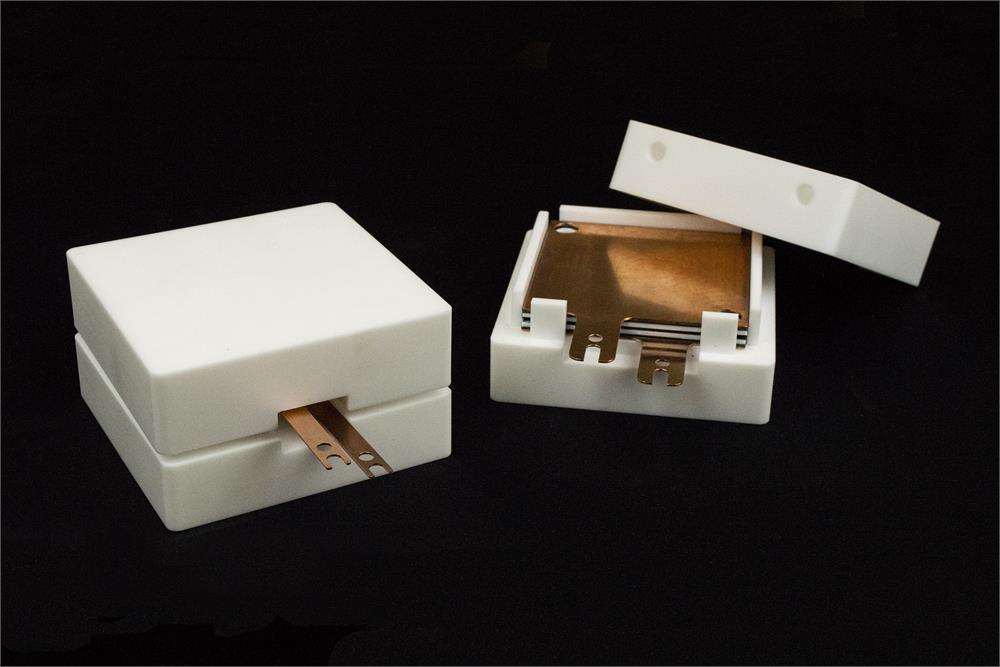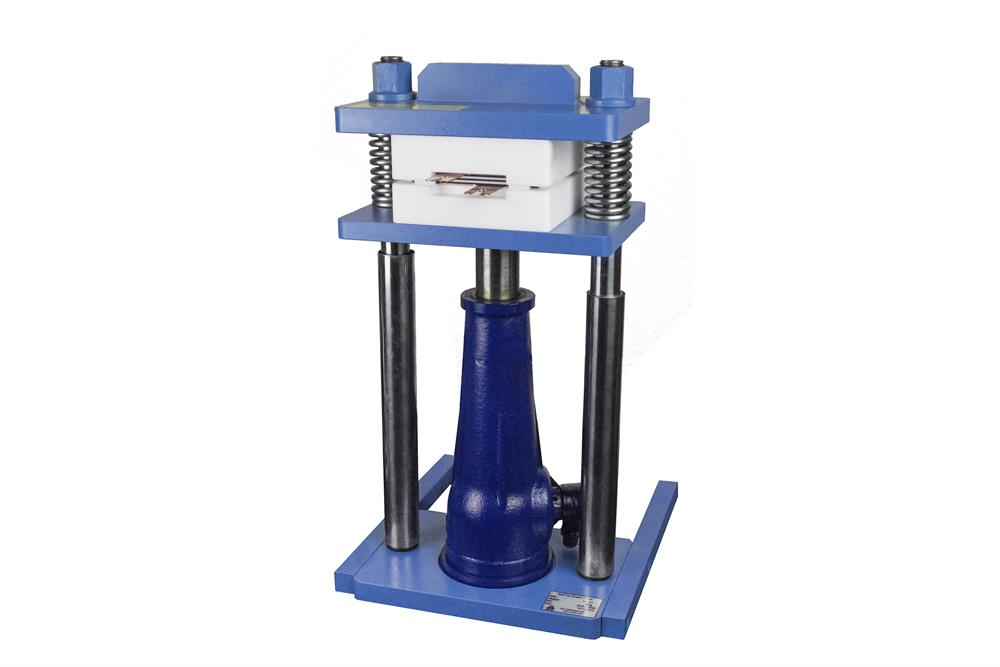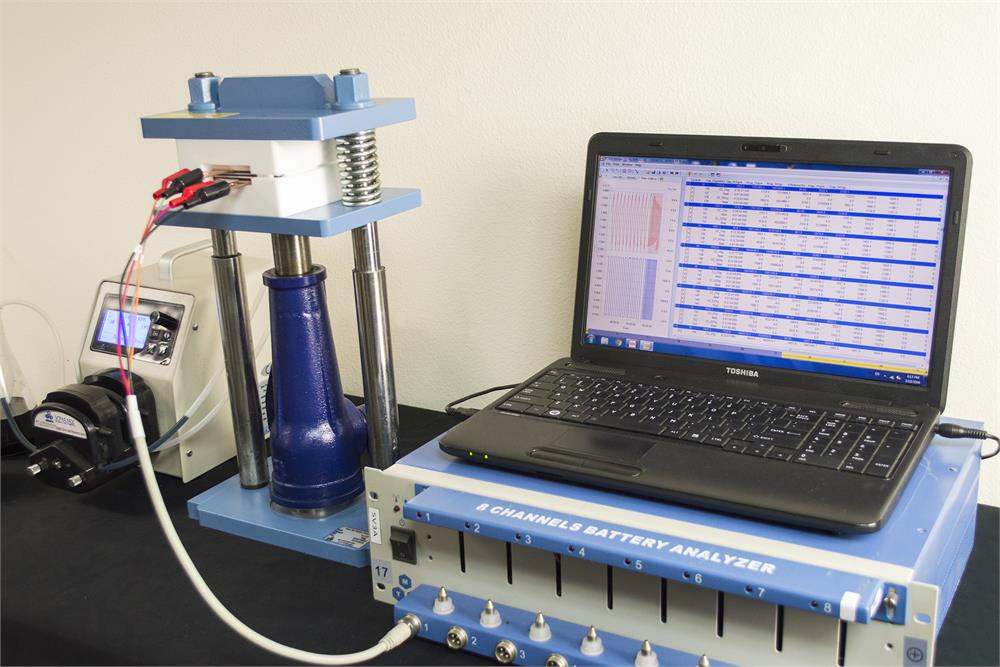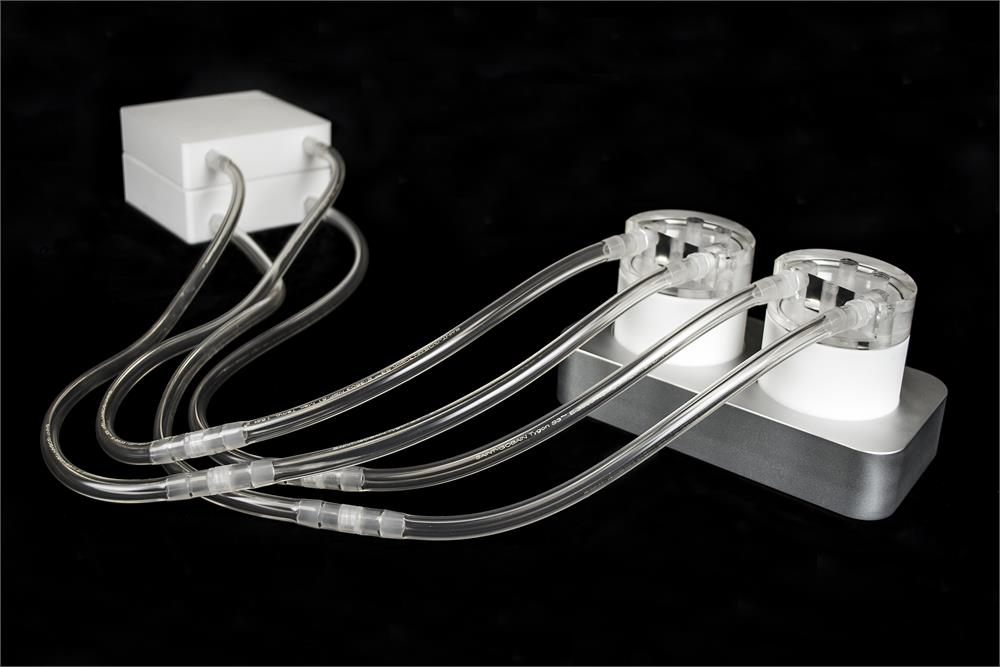Features:
 | - Single cell voltage range: 1.2V ~ 1.6V (depending on Vanadium electrolyte composition)
- Cell current density: 40 ~ 100 mA / cm^2 ( maximum 4.9A of possible current draw for a 7cm x 7cm reactive area)
- Manifold Blocks are made of anti-corrosive PTFE materials to withstand acids
- The large reactive area provides uniform and reliable test data
- Cathode materials are changeable according to the test conditions
- Easy assembly and disassembly
|
Reactive Area - Multiple Configurations

| - Standard cell comes with 3 interchangeable frames and gaskets for testing multiple parameters (please click the bottom left picture below for details):
- Custom reactive area sizes up to 7cm x 7cm can be requested at an extra cost
|
| Compression Pressure | - 87 PSI (0.6Mpa), ~300KG Force is recommended
- 116 PSI (0.8Mpa) Max.
|
Unit Cell Internal Structure (all components are included)

| All components, Manifold Blocks, Current Plates, Bipolar Plates, Gaskets, Frames, Carbon Felts, Membranes, O-Rings, liquid inlet, and outlet ports, are included for immediate use. Please click here to order extra Internal Components if it is needed.
  |
Bipolar Plates
 | - High electrical conductivty, chemical resistance, and high mechanical strength for toughness
- These highly flexible plates offer performance comparable to conventional graphite plates BUT have excellent resistance to breakage and have fewer defects
- Only ~0.7mm in thickness, this keeps cells thinner when stacked compared to graphite plates ( porous and brittle in nature; needs to be thick structurally)
- Needs frequent replacement, please order from the "Related Products" category below
|
External Dimensions
|  126mm (L) x 126mm (W) x 67mm (H) 126mm (L) x 126mm (W) x 67mm (H)
|
Application Notes
Vanadium Redox Flow Cell Sketch
 Photo Credit: Rahman, F.; Skyllas-Kazacos, M. Vanadium redox battery: Positive half-cell electrolyte studies. J. Power Sources 2009, 189, 1212-1219. | Procedure for Testing Flow Cell -- click the picture to enlarge:

MTI provides the complete setup at an affordable cost for the entire testing procedure. Please see images or related products below for more details.
- A jig or pressing machine is required to tightly press the cell together in order to suppress leakage of electrolyte solutions during live tests and also decrease ion/electron resistance. Please order a hydraulic jig separately form below or use your own jig -- WARNING: Never exceed a maximum pressure of 0.8MPa to avoid damage to the flow cell
- Peristaltic pump and battery analyzer are also available for making a low-cost DIY Flow Battery test system (please choose from related products below).
    
|
Relevant Articles & Videos
| Relevant Articles & Publications (click for links):
- "Vanadium Redox Battery" from http://www.vanadium-redox-battery.com/
- "Membranes for Redox Flow Battery Applications" Published: 19 June 2012
- "A Review of Metallic Bipolar Plates for Proton Exchange Membrane Fuel Cells: Materials and Fabrication Methods" Accepted: 13 June 2012
Videos (click to Watch):
A. HOW THE VANADIUM REDOX BATTERY (VRB) WORKS video credit: VanadiumCorp Resource Inc.
B. Making a vanadium redox flow battery, video credit: Energy Storage CDT (University of Southampton)
C. Video by MTI showing the Flow Cell in operation
A. B. C. C. |
| Optional Accessory |     |
